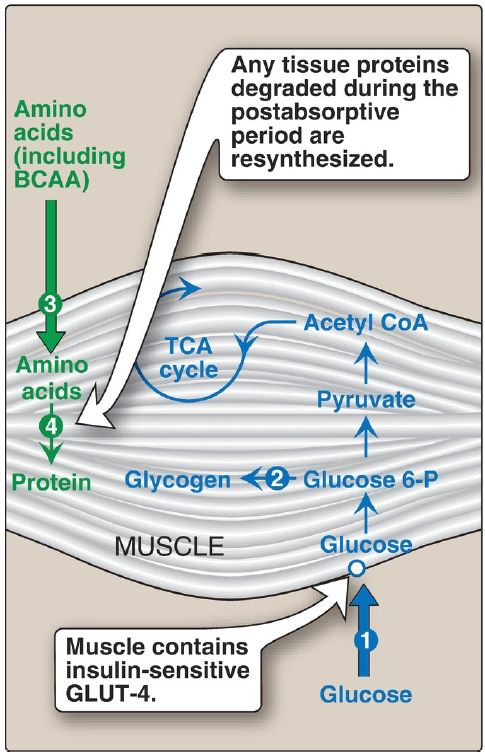

النبات

مواضيع عامة في علم النبات

الجذور - السيقان - الأوراق

النباتات الوعائية واللاوعائية

البذور (مغطاة البذور - عاريات البذور)

الطحالب

النباتات الطبية


الحيوان

مواضيع عامة في علم الحيوان

علم التشريح

التنوع الإحيائي

البايلوجيا الخلوية


الأحياء المجهرية

البكتيريا

الفطريات

الطفيليات

الفايروسات


علم الأمراض

الاورام

الامراض الوراثية

الامراض المناعية

الامراض المدارية

اضطرابات الدورة الدموية

مواضيع عامة في علم الامراض

الحشرات


التقانة الإحيائية

مواضيع عامة في التقانة الإحيائية


التقنية الحيوية المكروبية

التقنية الحيوية والميكروبات

الفعاليات الحيوية

وراثة الاحياء المجهرية

تصنيف الاحياء المجهرية

الاحياء المجهرية في الطبيعة

أيض الاجهاد

التقنية الحيوية والبيئة

التقنية الحيوية والطب

التقنية الحيوية والزراعة

التقنية الحيوية والصناعة

التقنية الحيوية والطاقة

البحار والطحالب الصغيرة

عزل البروتين

هندسة الجينات


التقنية الحياتية النانوية

مفاهيم التقنية الحيوية النانوية

التراكيب النانوية والمجاهر المستخدمة في رؤيتها

تصنيع وتخليق المواد النانوية

تطبيقات التقنية النانوية والحيوية النانوية

الرقائق والمتحسسات الحيوية

المصفوفات المجهرية وحاسوب الدنا

اللقاحات

البيئة والتلوث


علم الأجنة

اعضاء التكاثر وتشكل الاعراس

الاخصاب

التشطر

العصيبة وتشكل الجسيدات

تشكل اللواحق الجنينية

تكون المعيدة وظهور الطبقات الجنينية

مقدمة لعلم الاجنة


الأحياء الجزيئي

مواضيع عامة في الاحياء الجزيئي


علم وظائف الأعضاء


الغدد

مواضيع عامة في الغدد

الغدد الصم و هرموناتها

الجسم تحت السريري

الغدة النخامية

الغدة الكظرية

الغدة التناسلية

الغدة الدرقية والجار الدرقية

الغدة البنكرياسية

الغدة الصنوبرية

مواضيع عامة في علم وظائف الاعضاء

الخلية الحيوانية

الجهاز العصبي

أعضاء الحس

الجهاز العضلي

السوائل الجسمية

الجهاز الدوري والليمف

الجهاز التنفسي

الجهاز الهضمي

الجهاز البولي


المضادات الميكروبية

مواضيع عامة في المضادات الميكروبية

مضادات البكتيريا

مضادات الفطريات

مضادات الطفيليات

مضادات الفايروسات

علم الخلية

الوراثة

الأحياء العامة

المناعة

التحليلات المرضية

الكيمياء الحيوية

مواضيع متنوعة أخرى

الانزيمات
Resting Skeletal Muscle
المؤلف:
Denise R. Ferrier
المصدر:
Lippincott Illustrated Reviews: Biochemistry
الجزء والصفحة:
24-11-2021
2026
Resting Skeletal Muscle
Skeletal muscle accounts for ~40% of the body mass in individuals of healthy weight, and it can use glucose, amino acids, FA, and ketone bodies as fuel. In the well-fed state, muscle takes up glucose via GLUT-4 (for energy and glycogen synthesis) and amino acids (for energy and protein synthesis). In contrast to liver, there is no covalent regulation of PFK-2 in skeletal muscle. However, in the cardiac isozyme, the kinase domain is activated by epinephrine-mediated phosphorylation .
Skeletal muscle is unique in being able to respond to substantial changes in the demand for ATP that accompanies contraction. At rest, muscle accounts for ~25% of the oxygen (O2) consumption of the body, whereas during vigorous exercise, it is responsible for up to 90%. This underscores the fact that skeletal muscle, despite its potential for transient periods of anaerobic glycolysis, is an oxidative tissue.
A. Carbohydrate metabolism
1. Increased glucose transport: The transient increase in plasma glucose and insulin after a carbohydrate-rich meal leads to an increase in glucose transport into muscle cells (myocytes) by GLUT-4 ( Fig. 1, ), thereby reducing blood glucose. Glucose is phosphorylated to glucose 6-phosphate by hexokinase and metabolized to meet the energy needs of myocytes.

Figure 1: Major metabolic pathways in skeletal muscle in the absorptive state. [Note: The numbers in circles, which appear both in the figure and in the text, indicate important pathways for carbohydrate or protein metabolism.] CoA = coenzyme A; P = phosphate; GLUT = glucose transporter; BCAA = branchedchain amino acids; TCA = tricarboxylic acid.
2. Increased glycogenesis: The increased insulin/glucagon ratio and the availability of glucose 6-phosphate favor glycogen synthesis, particularly if glycogen stores have been depleted as a result of exercise (Fig. 1, ).
B. Fat metabolism
FA are released from chylomicrons and VLDL by the action of LPL . However, FA are of secondary importance as a fuel for resting muscle during the well-fed state, in which glucose is the primary source of energy.
C. Amino acid metabolism
1. Increased protein synthesis: An increase in amino acid uptake and protein synthesis occurs in the absorptive period after ingestion of a meal containing protein (see Fig. 1, and ). This synthesis replaces protein degraded since the previous meal.
2. Increased branched-chain amino acid uptake: Muscle is the principal site for degradation of the BCAA because it contains the required transaminase . The dietary BCAA escape metabolism by the liver and are taken up by muscle, where they are used for protein synthesis (see Fig. 1, ) and as energy sources.
 الاكثر قراءة في الكيمياء الحيوية
الاكثر قراءة في الكيمياء الحيوية
 اخر الاخبار
اخر الاخبار
اخبار العتبة العباسية المقدسة

الآخبار الصحية















 قسم الشؤون الفكرية يصدر كتاباً يوثق تاريخ السدانة في العتبة العباسية المقدسة
قسم الشؤون الفكرية يصدر كتاباً يوثق تاريخ السدانة في العتبة العباسية المقدسة "المهمة".. إصدار قصصي يوثّق القصص الفائزة في مسابقة فتوى الدفاع المقدسة للقصة القصيرة
"المهمة".. إصدار قصصي يوثّق القصص الفائزة في مسابقة فتوى الدفاع المقدسة للقصة القصيرة (نوافذ).. إصدار أدبي يوثق القصص الفائزة في مسابقة الإمام العسكري (عليه السلام)
(نوافذ).. إصدار أدبي يوثق القصص الفائزة في مسابقة الإمام العسكري (عليه السلام)


















